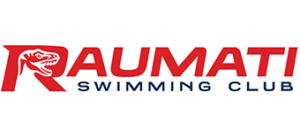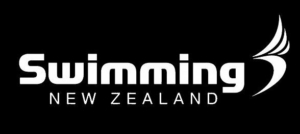HANDBOOK
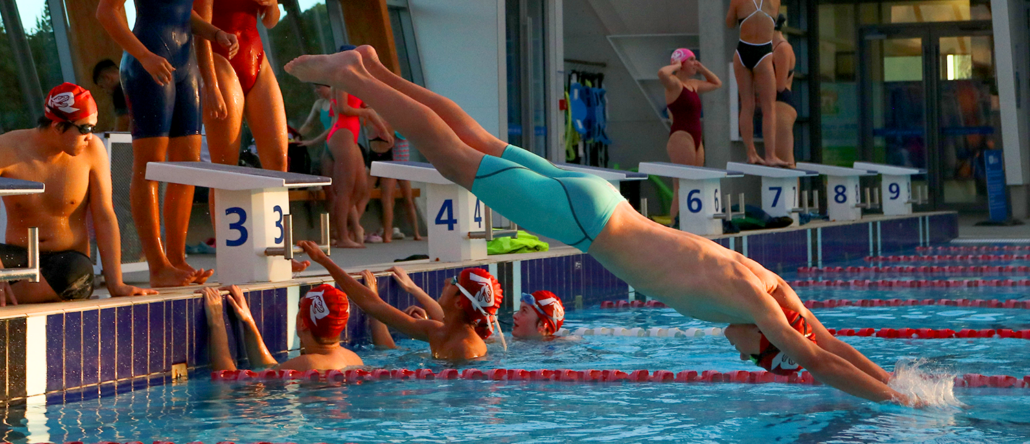
What meets should I enter?
Club members who are new to competitive swimming should enter our club race nights, as well as novice inter-club carnivals and Gold Coast Zone carnivals.The Swimmers who are keen should look then to qualifying for events at the Wellington regional championships: Wellington LC (in summer) and Wellington SC (in winter).
For more advice it is always best to talk to your coach.
What events should I enter?
Not sure what to enter? Again check with your coach, but a general rule: start with 50 metre events (50 back/free/fly/breast). Once you have some 50 metre times and are feeling confident try some 100metre events etc. You should try to swim all the different events even if you think you are not good at the other events.
How many events should I enter?
2 to 3 events per session or Meet is what you should aim for. If wanting to qualify in a particular event then no more than 1 or 2 events. Remember racing is not the same as training. Swimmers swim a long way in training but to have the best chance of a PB or a qualifying time it is best not to swim too many events at one meet. Generally you would only enter 1 x 200m event at a swim meet and maybe a shorter event.
Why did I get disqualified (DQd)?
The technical rules of swimming are designed to provide fair and equitable conditions of competition and to promote uniformity in the sport. Each swimming stroke has specific rules designed to ensure that no swimmer gets an unfair competitive advantage over another swimmer.
Trained officials observe the swimmers during each event to ensure compliance with these technical rules. If a swimmer commits an infraction of the rules that is observed by an official, a disqualification (DQ) will result. This means that the swimmer will not receive an official time and will not be eligible for an award in that event.
A disqualification may result from actions such as not getting to the starting blocks on time, false starting, and performing strokes in an illegal manner, or unsportsmanlike conduct.
DQs are also a result of technical rules violations. They include but are not limited to:
- Starts: Swimmers must come to a MOTIONLESS POSITION before the race begins. Rocking, rolling, leaning, etc must CEASE, or the starter can hold the race. Swimmers must come to a MOTIONLESS POSITION failure to do so will result in swimmers being charged with a false start. Often called wriggling on the blocks.
- Freestyle: Walking on the bottom, pulling on the lane rope, not touching the wall on a turn, or not completing the distance.
- Backstroke: Pulling or kicking into the wall once a swimmer has turned passed the vertical onto the breast. Turning onto the breast before touching the wall with the hand at the finish of the race.
- Breaststroke: An illegal kick such as flutter (freestyle), dolphin (butterfly), or scissors (side stroke); not on the breast; alternating movements of the arms; taking two arm strokes or two leg kicks while the head is under water; touching with only one hand at the turns or finish.
- Butterfly: Alternating movements of the arms or legs; pushing the arms forward under instead of over the water surface (underwater recovery); a breaststroke style of kick; touching with only one hand at the turns or finish
For more information read the Fina Regulations which contain a comprehensive detailing of all the swimming regulations and DQs.
What are the types of national events?
NZ Junior Festival SC
Open to qualifying swimmers aged 12 and under.
NZ Age Groups (NAGs) LC
Open to qualifying swimmers aged 12-18.
NZ Open Champs (Opens) LC
Open to all qualifying swimmers.
Division 2 competition (Div II) SC
For swimmers aged 12 and over who have not reached the qualifying criteria for NAGs or Opens.
NZ SC Champs
Open to all qualifying swimmers.
How do I enter a meet?
Flyers for swimming meets will be posted on the meets page on the website. The closing date for entries will be given.
For advice on which events to enter at a meet, the best person to talk to is your child’s coach, prior to a training session, or you can also contact the race secretary. When trying to qualify in particular events it is best not to enter too many events in one meet. Generally new swimmers would not do 2 200m events in one meet. Remember racing is not the same as training! Swimmers may swim many kms at training but only do a few lengths/events well when at racing speed.
What should I take to a swim meet?
You will be in the water for the warm-up session as well as several races, so 2-3 towels are advisable. You should also take warm clothing such as a thermal and beanie to keep warm. It is also important to keep you feet warm and protected, so slip-ons shoes, slippers or Ug boots are good. Easy to eat snacks (bananas, rice crackers, muesli or energy bars, nuts) are essential, as well as water. No sports drinks please. There can be lengthy waits between events, so take something to pass the time. If you are taking electronic gear, its safe-keeping is the swimmer’s responsibility. Of course, don’t forget your togs, Raptors cap and goggles, and it can be a good idea to have a spare set of goggles as well.
What do I wear to a swim meet?
You should always wear your Raptors uniform, which consists of shirt, jacket, track pants and shorts whenever you are representing the club at events.
Where do I sit at swim meets?
All swimmers are expected to sit together and at many swim meets a seating area will be designated for each club. We ask that only the team manager(s) and coach(es) sit with the team, as there are usually space restrictions and swimmers need to be easily available to the team management for instructions during the meet. Parents who are not acting as officials for the meet are to sit in the public seating area.
What does PB mean?
“PB” means “personal best” and refers to the fastest official time a swimmer has recorded in a specific event. In order to have an official time, the event must be swum at a meet correctly overseen by trained officials (timekeepers, referee among others) and at a designated 25m or 50m pool. A PB does not stand if the swimmer is disqualified during the event. The PB will be in either a LC or SC PB.
How do I find out my current times?
Results from club, regional and national meets will appear on the website once they are official. Swimming New Zealand also has a database for all New Zealand swim meet results.
What are qualifying times?
Some swim meets (usually national and regional meets) have qualifying times. This means swimmers must swim that qualifying time or faster time to enter this meet.
No Time or NTs
Some meet flyers will say no NTs or 1 NTs allowed. This means if you haven’t swum an event you won’t have a time for it. That means you cannot enter that meet if you haven’t swum that event before, or you can enter only 1 event (1NT) you have not swum before.
What do the terms Long Course (LC) and Short Course (SC) mean?
The term Long Course refers to racing held in a 50m pool, while Short Course racing is held in a 25m pool. The swimming calendar is divided into SC and LC events. For our club, the SC focus is from the completion of national events in March/April through to Wellington Winter SC Champs in late August/September. Swimmers then train for and compete in LC events through to Wellington Summer LC Champs in January, when the focus then goes on to national events over February – April.
It is possible to convert times swum in a SC pool into a LC time, and vice versa. The conversion table is at the end of this page.
What is the order of swimming strokes in a medley event?
In an individual medley event the order is butterfly, breaststroke, backstroke, freestyle. In a medley relay, the order is backstroke, breaststroke, butterfly, freestyle.
How can I help out as a parent?
Swimming meets will not function without officials, from our club race nights through to national meets. You can begin by being a timekeeper at club race nights – easy to do and you get a seat at the action end of the pool! If you wish, you can be trained as a chief time keeper, IOT (Inspector of Turns), Starter, Referee … even moving on to being an official at national level.
At club level, you may like to join the board, help with fundraising or social events, or coach at Tuesday night swimming.
Swimming terminology explained
Competitive swimming can be rather confusing for both swimmers and parents until they have got used to the technical terminology which is used. Below are a range of terms with short explanations.
Seeding
This is done to put swimmers into heats. Swimmers are seeded into heats with swimmers with similar times. Seeding is done by the swimmer’s entry times. Slowest times are seeded (put in) in the first heat all the way up to the last, fastest or ‘top’ heat. The fastest seeded swimmer is always put in the middle lane of the pool with the next 2 fastest swimmers either side and so on, out to the slowest swimmers in the heat in the outside lanes. The middle lane is considered the best/fastest lane because there is less wake from other swimmers there. Where as the 2 outside lanes would be considered the ‘worst’ lanes as they get the most wake. In reality: “Got a lane, got a chance!”
Timed finals
This means that there are no finals and the winners are announced according to the fastest time after all heats have been completed. Swimming in a heat in a timed final is not the same a making a final. The final is made up of the fastest (8-10 swimmers) overall heats in that event/agegroup. Results are correlated after all swimmers have swum.
Disqualification (DQ)
The most common reasons why a swimmer is disqualified are that a swimmer has not touched the wall properly when turning or has not used the proper stroke technique. DQs are very common and swimmers should not feel disheartened, even experienced swimmers get DQd. When you are DQd your time will not count.
Over the Top Starts
This means that swimmers stay in the water until the next heat has started. They must stand about a metre away from the end of the pool, next to the lane rope. They must stand still until the next swimmer has dived into the pool and must then exit the pool quickly from the side.
One Start Rule
This means that a swimmer is automatically disqualified for provoking a false start.
Starts and False Starts
On the long whistle from the referee, swimmers mount the starting blocks. The referee will then hand over to the starter who will say ‘take your marks’. Once all swimmers are stationery, the starter will either fire a starter gun or press the electronic starter button.
In the case of backstroke or medley events, on the long whistle from the referee swimmers will enter the water. On the referee’s second whistle swimmers will quickly assume their starting positions. The starter will then say ‘take your marks’ and, once all swimmers are stationery, will give the starting signal.
In the event of a false start, the starter will press the starter button again and/or the false start rope will be dropped into the water.
Kickboard
A flat rectangular piece of foam used in kick sets.
Pull buoy
A piece of foam that goes between your legs and helps you float whilst doing pull sets.
Paddles
Flat pieces of plastic worn on the hands, usually during pull sets.
Individual Medley or IM
A race comprising all four strokes in the following order – butterfly, backstroke, breaststroke and freestyle (see above).
Touchpad
A pressure plate at the end of the pool that acts as a stopwatch. When the swimmer finishes and hits the touchpad, it records the time. Swimmers should not exit the pool by climbing over the touchpad; exit at the side of the pool.
Heats
The divisions of an event in which there are too many swimmers to compete at one time.
Coach
“The king of the pool and the one that is always right”!
Pool length conversion?
To convert Short Course to Long Course times you add the seconds
(To convert Long Course to Short Course times you subtract the seconds)
| STROKE | DISTANCE | Short to Long | TIME ADJUSTMENT |
|---|---|---|---|
| FREESTYLE | 50m | Add | 0.85 |
| 100m | Add | 1.70 | |
| 200m | Add | 3.40 | |
| 400m | Add | 6.80 | |
| 800m | Add | 13.60 | |
| 1500m | Add | 25.50 | |
| BACKSTROKE | 50m | Add | 0.85 |
| 100m | Add | 1.70 | |
| 200m | Add | 3.40 | |
| BREASTSTROKE | 50m | Add | 1.00 |
| 100m | Add | 2.00 | |
| 200m | Add | 4.00 | |
| BUTTERFLY | 50m | Add | 0.70 |
| 100m | Add | 1.40 | |
| 200m | Add | 2.80 | |
| INDIVIDUAL MEDLEY | 200 IM | Add | 3.40 |
| 400 IM | Add | 6.80 |
History of the RSC
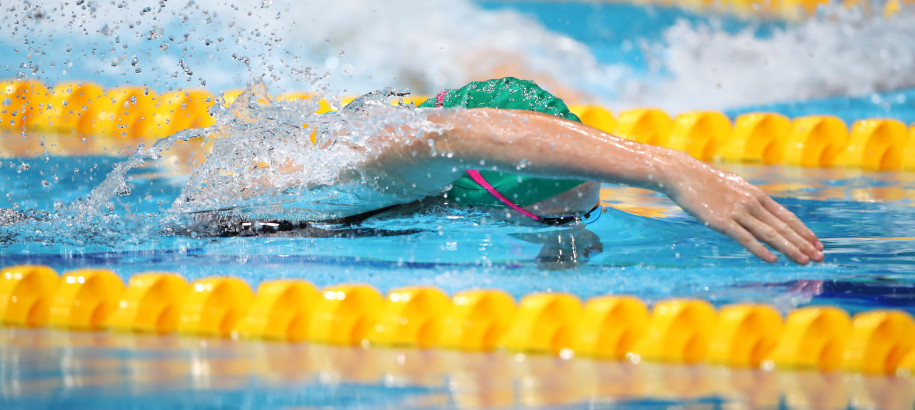
Raumati Swimming Club was formed from the surf club, at the end of Tiromoana Road in Raumati South. In 1962 the Raumati pool opened as an outdoor salt water pool. The surf club became more orientated to pool swimming and became Raumati Surf Life Saving and Amateur Swim Club.
In 1971/72, the club, wanting to train all year round used Alex McKimm′s indoor heated pool. Unfortunately rising heating costs forced the closure of this pool and all activities were transferred to Cannon′s Creek Pool. In the early days training was two nights a week, progressing to two nights and four mornings.
Wanting to have a pool locally the club began raising funds by selling raffle tickets. Funds were put into a trust, while the council explored sites for a new pool. Eventually the council decided to cover the pool and convert it to freshwater. Raumati swimming pool reopened in 1983 after being closed for six years.
In 1988 funds were obtained through NZI life in the form of a reducing debenture to build the club rooms. In 1998 the debenture was owned in full.
At the end of July 2013 the club sadly farewelled the failing Raumati pool and moved its training to the new Coastlands Aquatic Centre in Paraparaumu. RSC swimmers and committee worked very hard fundraising and volunteering to help bring about the new aquatic centre, and are very much looking forward to this new chapter in their swimming lives.
In 2014 the Raumati Swimming Club, now training in their new venue took on the brand of RSC Raptors, adopting the R on uniform, caps and media.
CLUB NIGHT
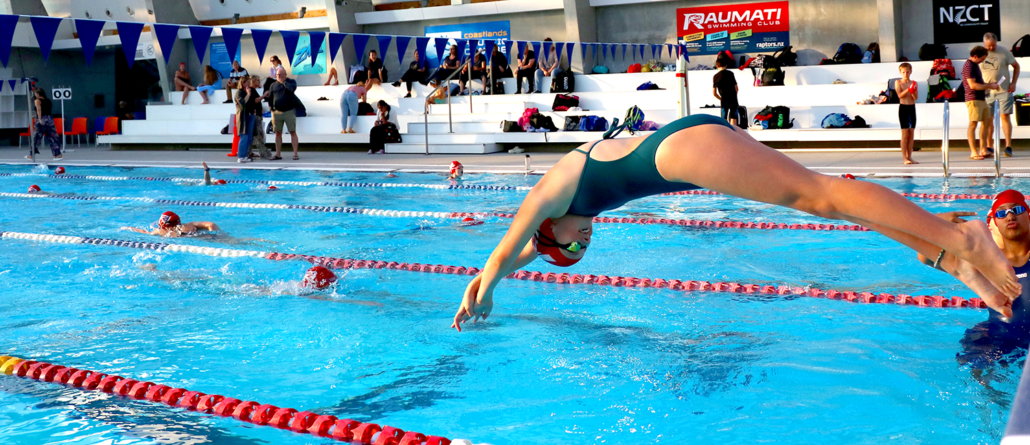
To know more contact us or fill in the registration form. Tuesday night offers swimming development and beginning to swim techniques while promoting the correct strokes and skills used by competitive swimmers and racing in teams. Children may start from age five.
Club Night (Learn to Swim / Compete) is run by experienced coaches who are ASTA qualified and who have completed pool life saving and first aid courses. Most are current or previous competitive (Squad) swimmers.
Children can begin their first swimming steps with Tuesday Club swimming; we welcome children who are complete beginners as well as improvers. Swimmers progress from the programme’s pool to the main pool, where they work on fitness, technique and swimming skills, while also gaining competitive swimming skills. We hold regular fun race nights and love when our Tuesday night swimmers enter. Many children from the Tuesday Club go on to our squad swimming programme.
Our focus is swimming in a fun club environment: swimmers start swimming and learning together, have fun, work on skills and make friendships along the way up to the big pool.
Registrations are from 1 July every year, but enquiries at any other time are welcomed and we would love to have your child swim with us. Many families choose the Tuesday night programme so all the children in the family can swim at the same time. Please note that as a club we do request parent help from time to time.
Payment can be Internet banked to: 03-0732-0237257-00. Add your child’s name as the reference.
No refunds are offered for unexpected pool closures.
DOCUMENTS
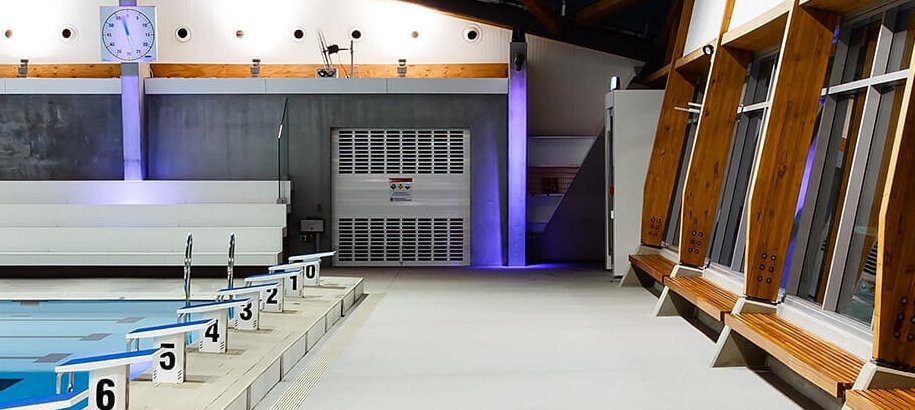
LATEST DOCUMENTS:
- Notice of Annual General Meeting of the Raumati Swimming Club 2022
- AGM Notice of Motion-2022
- AGM Board-nomination-2022
Please LOGIN / REGISTER (top right of screen) to access the members section of this website to view other documents including constitution.
CLUB UNIFORM
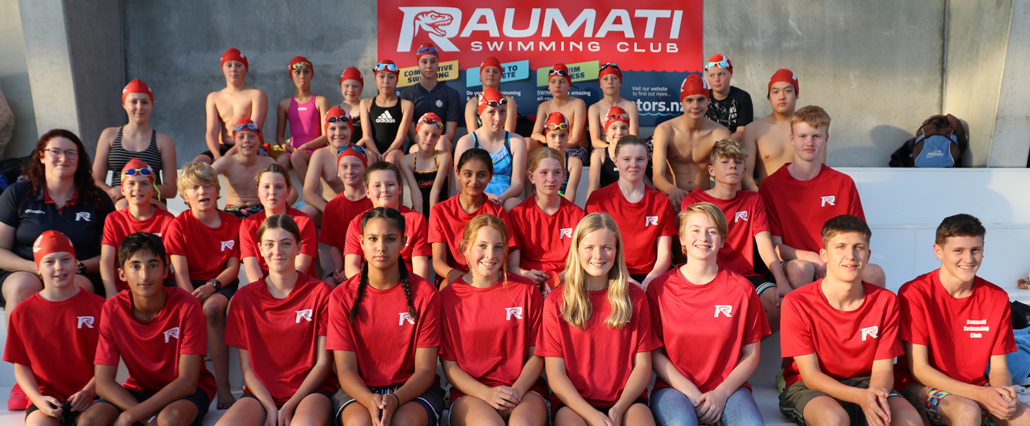
OFFICIAL UNIFORM
The official uniform can be purchased at our online shop…
